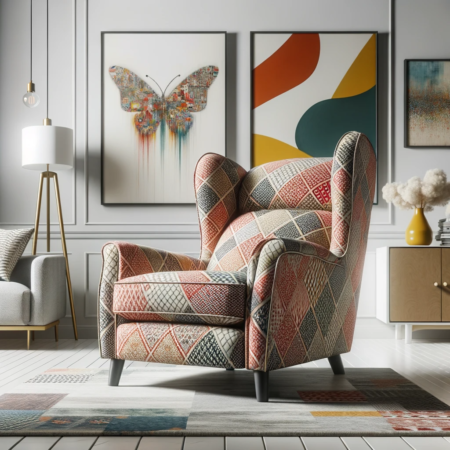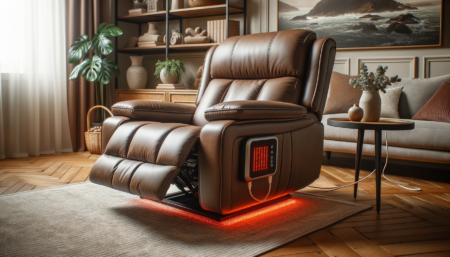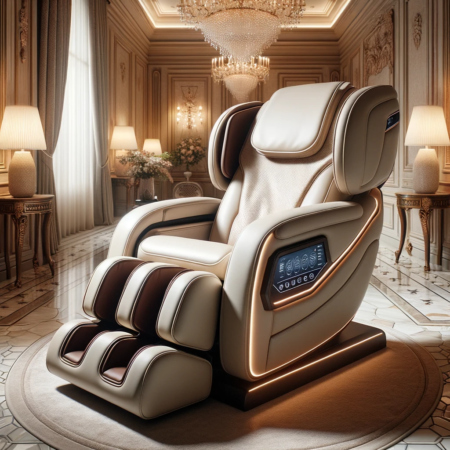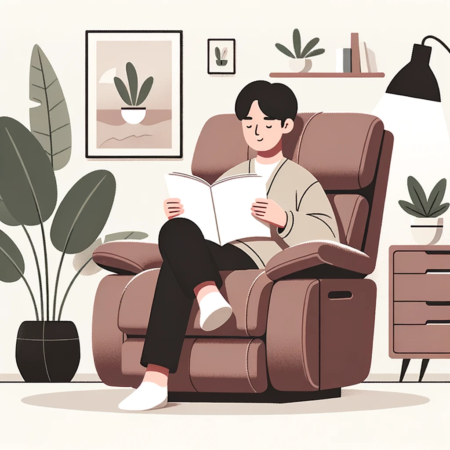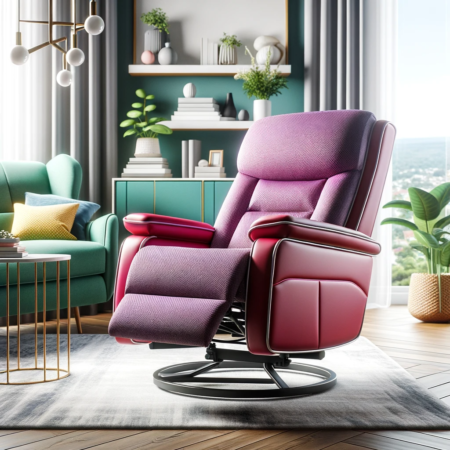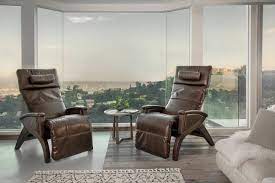With the simple press of a button, you can recline your chair to your desired position and enjoy the ultimate in relaxation. But what happens when your power recliner starts to malfunction?
Unfortunately, power recliners are not immune to problems. In fact, there are a number of common issues that users can face. These problems can range from minor inconveniences to serious safety hazards. That’s why it’s important to be aware of the potential problems that can occur with power recliners and know how to troubleshoot them.
In this article, we’ll discuss some of the most common problems that users face with power recliners and provide solutions for each one.

Mechanical Problems
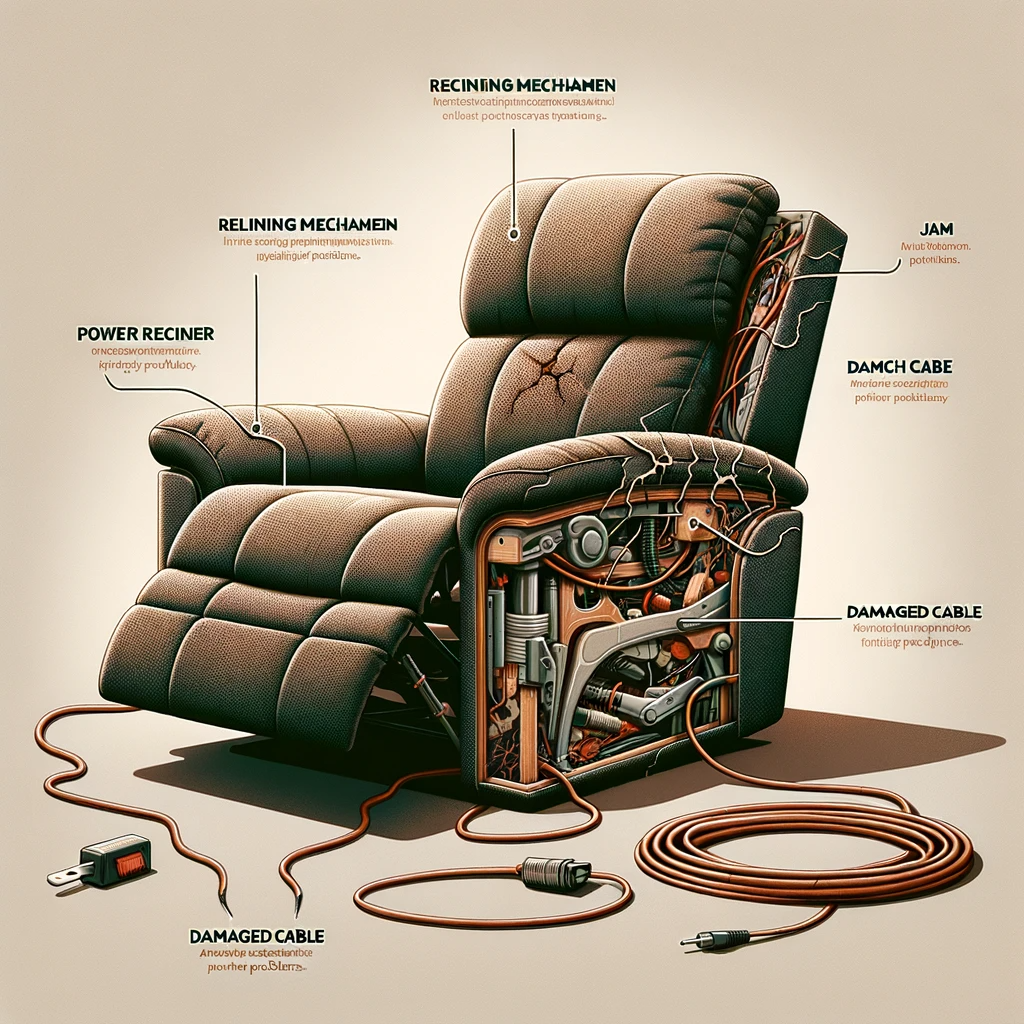
The three basic mechanical problems that usually users face are:
Stuck Reclining Mechanism
Issue: Over time, power recliners can encounter mechanical hitches. A stuck reclining mechanism is often a result of a motor malfunction, wear and tear, or obstructions within the internal parts of the chair. When the chair doesn’t adjust as it should, it’s a clear indication of such issues at play.
Solution: Firstly, ensure that there’s no external interference causing the malfunction. Inspect the recliner for any visible obstructions. Next, check the power source to make sure it’s connected and functioning correctly. If the problem persists, it might be best to consult a professional or consider replacing the motor entirely to restore the chair to its optimal state.
Noise or Grinding Sounds
Issue: If your power recliner starts making unusual noises, such as grinding sounds, it’s a telltale sign of wear and tear or misalignment. These noises aren’t just annoying; they indicate that some parts of the recliner are not operating smoothly, possibly due to lack of lubrication or the wear of components over time.
Solution: The best preventive measure is regular maintenance. Ensure that the moving parts of the recliner are well-lubricated to prevent friction and wear. If the sounds persist, it might be time to inspect for worn-out components and consider replacements. Addressing the issue early on can prevent more significant damage and prolong the life of your recliner.
Footrest Not Working Properly
Issue: If the footrest fails to extend or retract smoothly. Such malfunctions could arise from a weakened motor, a misaligned mechanism, or even obstructions preventing its proper movement.

Solution: Begin by checking for any visible obstructions hindering the footrest’s movement. Ensure that the recliner is receiving power and that all connections are secure. If the footrest continues to malfunction, consider lubricating its mechanisms. Persistent issues might require professional inspection to determine if the motor or any other internal component needs replacement.
Electrical Issues
Power recliners are powered by electricity, so it’s no surprise that electrical issues are one of the most common problems that users face.
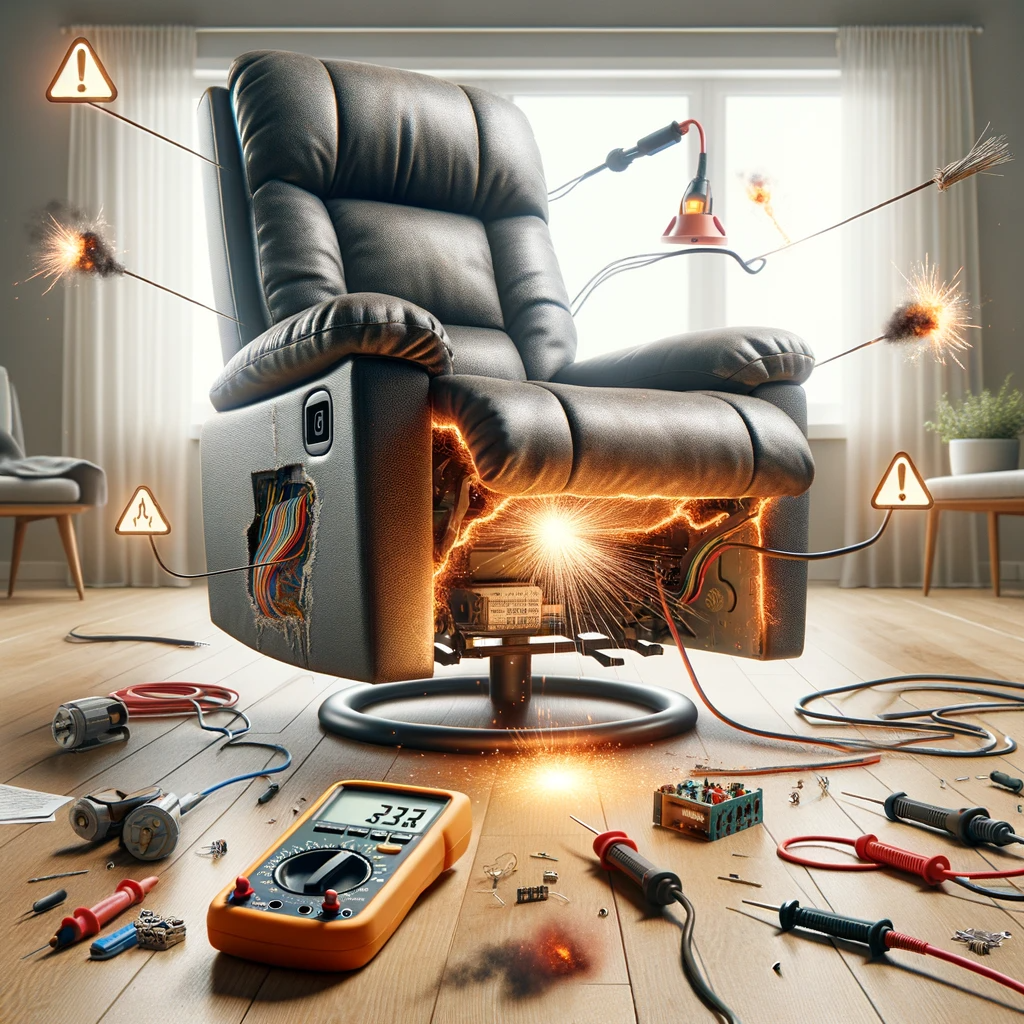
Here are some of the most common electrical issues that can occur with power recliners, along with solutions for each one:
1: Power recliner won’t turn on
Issue: You are trying to on the recliner to relax on it. But the power recliner won’t be ON.
Solution: This is the most common electrical issue with power recliners. There are a few things you can check to troubleshoot this issue:
- Make sure that the recliner is plugged into a working outlet.
- Check the power cord for any damage. If the power cord is damaged, replace it with a new one.
- Check the fuse in the recliner’s power supply. If the fuse is blown, replace it with a new one.
- If the recliner still won’t turn on, contact a qualified technician for further assistance.
2: Remote Control Malfunction
Issue: If the recliner no longer responds to remote commands, it disrupts this convenience.

Solution: Follow the following steps
- Start by replacing the remote’s batteries with fresh ones to ensure that power depletion isn’t the issue.
- Next, verify that the remote is correctly paired to the recliner.
- Inspect the remote for any physical damages, particularly on the buttons and infrared emitter. If the problems persist, it might be best to consider procuring a replacement remote to restore full functionality.
User-Related Issues
Here are some user-related issues that can occur with power recliners, along with solutions for each one:
1: Reclining Issue
Issue: If you are finding difficulty reclining or getting out of the recliner.

Solution
- Check the power source: Ensure that your power recliner is plugged in and that the outlet is working correctly.
- Check the wiring: Turn your chair over carefully and examine the wiring underneath the seat. Check for any loose or disconnected wires and reconnect them if necessary.
- Check the footrest: If the footrest is not retracting properly, check for any objects that may be caught, such as a small toy or building block, and remove it.
- Check the motor: If the above solutions do not work, use a multimeter to test the motor of your power recliner to determine if there is an issue with it.If you are uncomfortable doing these checks, seek help from a professional repair service or the manufacturer’s customer service
2: Footrest Stuck
Issue: If the footrest of your power recliner gets stuck in the open or closed position
Solution:
Try unplugging the recliner for a few minutes and then plugging it back in.
Ensure that the power supply is not interrupted, and check whether the locking mechanism for your footrest is turned off or not. If either of the situations mentioned above applies to you, then you have just found the cause of your electric recliner not going down.
You will need to turn off the power to your recliner and locate the circuit box in which the motor section is present. After locating your faulty motor section, you will remove the wires connected to it and replace them with new ones. After replacing your damaged wires with new wires, switch on the power supply to test your recliner and check if your footrest is working properly.
3: Armrests becoming loose
Issue: One of the common problems that can occur in power recliners is the armrests becoming loose.
Solution:
- The first solution is to tighten the screws that hold the armrests in place. Use a screwdriver to tighten the screws and make sure they are secure.
- If the armrests are still loose after tightening the screws, check the bolts that hold the armrests in place. If the bolts are loose, use a wrench to tighten them.
- If the screws or bolts are stripped or damaged, they may need to be replaced. You can purchase replacement screws or bolts from the manufacturer or a hardware store.
4: Fabric becoming torn or damaged
Issue: One of the problems that can occur with power recliners is the fabric becoming torn or damaged.
Solution: This can happen due to regular wear and tear or accidental damage. Here are some solutions to this problem:
- If the damage is minor, you can repair the fabric yourself. You can use a fabric patch kit to fix small holes or tears. Here are the steps in the flowchart:

- If the damage is extensive, you may need to replace the fabric entirely. You can either do this yourself or seek professional help. Here are the steps in flowchart :

To Conclude
Being proactive by acknowledging and understanding potential issues is crucial in maintaining the recliner’s functionality and longevity.
Regular maintenance, coupled with a comprehensive knowledge of the recliner’s operation, is imperative in preventing common problems and facilitating effective solutions when issues do arise. Ultimately, a well-maintained power recliner enhances user satisfaction, safety, and the overall reclining experience.
How do I troubleshoot a power recliner that is not working at all?
Start by checking the power source, ensuring the recliner is plugged in or the battery is charged. If the power source is not the issue, inspect the power cord and connections. If the problem persists, it may require professional repair.
What should I do if the power recliner’s motor is making a grinding or clicking noise?
Grinding or clicking noises from the motor could indicate a mechanical issue. Inspect the reclining mechanism for any obstructions or damaged components. If you can’t identify the problem, consult a professional technician.
What should I do if the power recliner’s motor is making a grinding or clicking noise?
Grinding or clicking noises from the motor could indicate a mechanical issue. Inspect the reclining mechanism for any obstructions or damaged components. If you can’t identify the problem, consult a professional technician.
How do I lubricate or maintain the moving parts of a power recliner?
Lubricating the moving parts of a power recliner can help prevent squeaks and ensure smooth operation. Consult your recliner’s user manual for guidance on which lubricants to use and where to apply them. Regular maintenance can extend the lifespan of your recliner.
